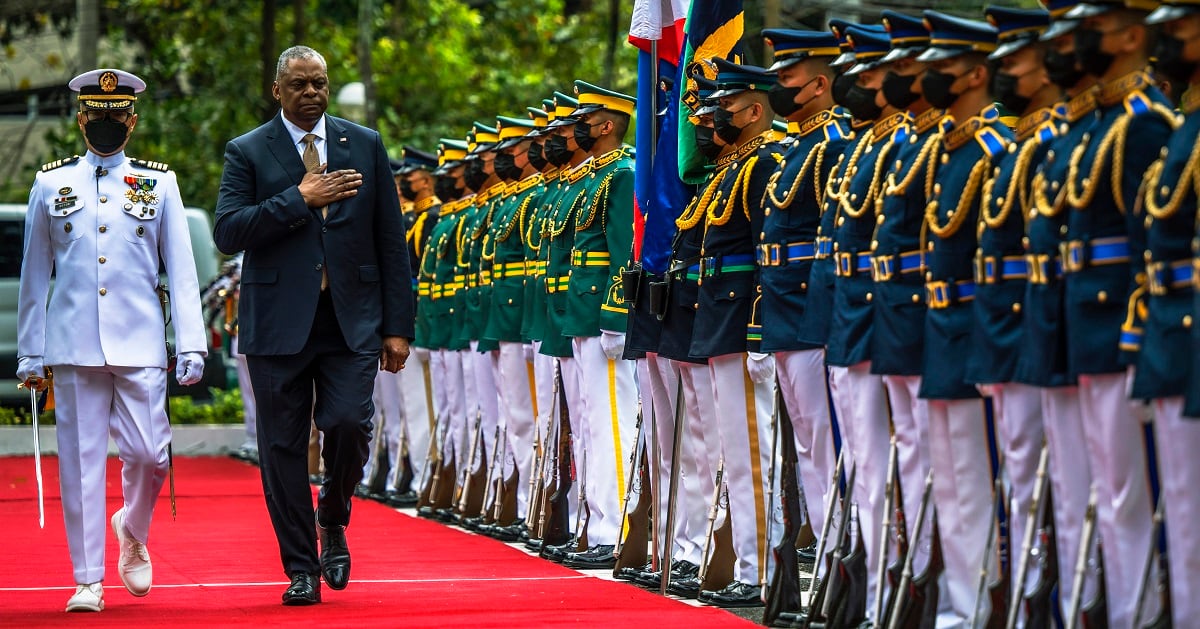In an era defined by complex geopolitical dynamics and emerging security threats posed by the People’s Republic of China, Russia, and North Korea, the Indo-Pacific region stands as a pivotal theater where strategic alliances and partnerships are crucial for maintaining stability and safeguarding common interests.
In recent years, notable progress has been made in fostering multilateral relationships within the Indo-Pacific region, moving beyond traditional bilateral frameworks towards mini-lateral arrangements.
RELATED

Just this month, U.S. Defense Secretary Lloyd Austin convened the inaugural quadrilateral defense ministers meeting in Honolulu, bringing together allies Australia, Japan, and the Philippines. This gathering followed landmark joint patrols conducted by these nations in the South China Sea and a first trilateral U.S.-Japan-Philippines leaders’ summit held in April.
Concurrently, the U.S. continues to strengthen its trilateral ties with Japan and South Korea while expanding its quadrilateral cooperation with Australia, Japan, and India. Despite these advancements, however, a significant gap remains apparent—a deficient information sharing network that fails to adequately reflect the depth and scope of our evolving partnerships.
The current structure, largely rooted in antiquated bilateral information systems, lacks the agility and robustness required to address the multifaceted challenges of the 21st century.
While the U.S.-Japan-South Korea have a trilateral sharing agreement, information exchange between Tokyo and Seoul remains in its early stages and largely centered on the nuclear and missile threats by North Korea, less so on the other security and economic threats in the region. Efforts to establish information sharing among the U.S., Japan, Australia, and India are still ongoing, with discussions centered on how to cooperate on cybersecurity.
By year-end, the U.S. and the Philippines will hopefully finalize the General Security of Military Information Agreement, which would enable real-time information sharing and technology across domains, and perhaps could serve as a catalyst to make these new groupings into a more robust information sharing network.
Five Eyes
Despite these efforts, we are still a long way off in establishing a secure network that connects these separate channels together, allowing concurrent secure communications across partners under one system that incorporates databases and exchanges via email, text, or video. Currently, the only cross collaboration or communication of information among allies is under the “Five Eyes” rub, of which Australia, Canada, the United Kingdom, and New Zealand are part of, and even under this structure the system isn’t perfect.
Having a joint capability to track maritime, ground, and air activities or any other coercive activities in the Indo-Pacific would be immensely useful, particularly as the People’s Liberation Army’s activities grows more dangerous every day. Additionally, it is even more important for the U.S. and its partners to identify and mitigate economic security risks, critical technology concerns, and supply chain vulnerabilities as well as the opportunities to collaborate effectively against these risks.
To be effective, we need to create a secure, zero-based trust network that would allow the transfer of sensitive information, enhance situational awareness, and fortify joint operations and operating pictures. Much of this could be built on the zero trust architecture that DoD directed to be built by 2027 to enable secure data-sharing. Last year, the U.S. Indo-Pacific Command (INDOPACOM) accelerated efforts to construct such a network called the INDOPACOM Mission Network (IMN), which has its pedigree to the DoD’s larger Mission Partner Environment (MPE), and would allow the command to rapidly share information as well as operate a common operating picture with allies and partners, representing a critical step towards overcoming these challenges.
IMN would essentially incorporate and replace stove-piped bilateral collaboration networks and create an interconnected web of communication and integration among U.S. and its allies and partners. It would also eventually feed into INDOPACOM’s Joint Fires Network, which will integrate systems across the entire battlespace among the services as well as key international partners.
The value of an integrated information sharing network would also extend beyond traditional defense considerations. A network that serves as the bedrock for addressing broader strategic imperatives such as economic resilience, defense industrial base requirements, technological innovation, and safeguarding critical infrastructure is greatly needed. Eventually, this network — or an offshoot that feeds into IMN — could enable cleared private industries within participating nations that are supporting government efforts to better collaborate on these issues.
Three steps
To realize this vision, several critical steps must be undertaken:
First, there is an urgent need to set what the baseline security standards and protocols are needed for countries to participate in a zero-trust information sharing network, particularly as it relates to cleared personnel, training, practices, cybersecurity infrastructure, and any necessary information agreements. These standards should not only ensure the confidentiality, integrity, and availability of shared information but also facilitate interoperability and collaboration across diverse platforms and systems—controlling security permissions as necessary.
Second, each country needs to ensure it has its own secure infrastructure and common operating picture to share information within its own interagency. The use of U.S. security cooperation authorities or even Foreign Military Sales could support partners to acquire such capabilities and train personnel to standardize security clearances, practices, and infrastructure in those nations. Private industry could help in this effort.
Third, adequate funding and alignment DoD is imperative to support the development and implementation of IMN. Without sufficient resources, cohesive governance structures, and top-down leadership, even the most well-conceived initiatives are destined to falter or not progress. Over the last five years, and perhaps more, IMN and its precursor MPE has been a recurrent unfunded Commander’s priority. Even though the Indo-Pacific region is stated as DoD’s priority theater, $124,000 million of IMN remains unfunded for FY2025 and should get funded this year.
Finally, for this endeavor to succeed, it necessitates focused attention and prioritization at the highest echelons of leadership. Its progress is contingent upon the commitment of senior DoD leaders and the availability of resources provided to execute it. Civilian leadership at the senior level within the Office of the Secretary of Defense for Policy must support and accelerate such steps. Considering the scope of implementation across allies and partners and the imperative to standardize processes and data across various services, it also might make sense for a civilian czar to accelerate these efforts.
In charting the course forward, it is imperative to draw lessons from successful models of collaboration, while tailoring them to the unique dynamics of the Indo-Pacific, and to accelerate the positive momentum occurring with our allies and partners in the region. By leveraging the expertise and capabilities of like-minded nations, we can expedite the standardization of protocols and technologies across these new multilateral and bilateral groupings — ensuring seamless, secure, and efficient communication channels that are indispensable in both peacetime and conflict scenarios.
Kimberly Lehn is a senior associate (non-resident) at the Center for Strategic and International Studies, a senior fellow (non-resident) at the Center for Strategic and Budgetary Assessments and a former professional staff member on the House Armed Services Committee.








